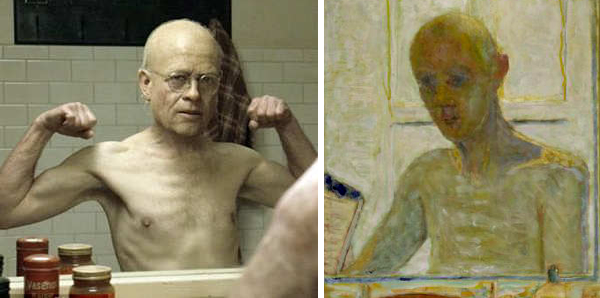Random
Mirror men

That The Curious Case of Benjamin Button (1922) was posthumously made into a film (2008) may be ironic — to brave a word perhaps deplete of any meaning by now — given the author’s self-perceived degradation of writing for Hollywood as he grew older and financially more dependent in his maintenance of a vapid lifestyle. His last lover was a gossip columnist, proof that blogging has always existed. They say a writer’s best work is in his late twenties, before the soft middle-age limpy interval, but that only a great writer will make his best work near his death, alluding so some moral component and/or mortal imperative of great writing. It is sad to think of a drunk Fitzgerald, a loopy sentimental Hemingway, or a blind ass jibbering Joyce; we look towards Tolstoy, Shakespeare, as examples of work whose maturity lies in correlation with their age. We may see Benjamin Button as an inadvertent commentary on the mediocre artist, the fated infant. In 1935, at the age of 68, Pierre Bonnard painted “Self Portrait in a Shaving Mirror,” two eye socket holes hidden in the shadow of his own face, perhaps seared by the southern France sun of younger days before locking himself in the bathroom — something he may have learned from his wife Marthe, an obsessive compulsive bather (hence, the bathing series), on whom he cheated with one Renée Monchaty, of sunnier disposition. In his paintings of the former, the latter is often hidden at the edge of the canvas, camouflaged in the quivering aggregate of floral brush marks which consumed him. Bonnard didn’t name it “Self Portrait in a Shaving Mirror” — an art historian came along later to distinguish it from the all the other ones, to make discourse when discourse was not intended easier. But it’s hard to comment when you’re dead, and other perilous times as well.

:-/